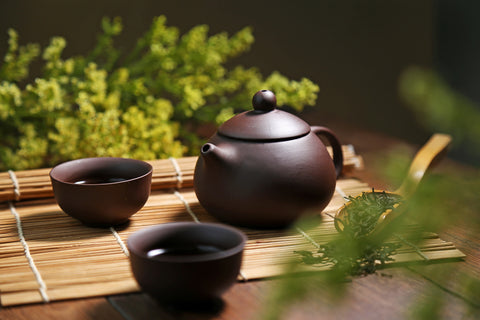In one of our previous blogs we talked about tea cultures around the world where traditions of a few countries were discussed. You might have noticed that we didn’t discuss the Japanese tea culture in that blog and that is because Japan’s tea culture is so deep-rooted and extensive, we thought that it’s only fair to dedicate an entire blog to the country’s tea culture.
Continue reading and discover the unique tea culture of Japan.
The History

The first-ever recorded evidence of Japanese tea ceremonies date back to the 8th century. During ancient times, tea was primarily considered as a medicament and was exclusive to monks and individuals from the upper classes of society. It was only during the Muromachi Period (1336 - 1573) that tea became accessible to all classes of society.
For the affluent society in Japan, tea drinking parties became a way of displaying one’s exquisite teaware collections and showing off their knowledge about tea. It was around the same time that the Zen philosophy inspired simple tea parties with a more spiritual focus. This led to the origin of tea ceremonies.
Japanese Tea Ceremonies
Japanese Tea ceremonies are divided into two categories, formal and informal. The formal ceremony is known as Chaji and the informal as Chakai. Chakai ceremonies typically last less than an hour. However, learning how to conduct a ceremony can take years of practice! For Chaji ceremonies, special invitees like Senior Tea Masters are invited. These formal ceremonies can last anywhere between three to four hours. Tea ceremonies that last this long and take time to prepare (Chaji ceremonies) are usually arranged in honour of significant reasons like celebration of a new era.
These tea ceremonies take place in such a calm and poised manner that allows all the attention to be on the tea preparation process.
Rather than the common concept of serving and accepting, these ceremonies are done with the purpose of showing the host’s hospitality towards their guests. It is also a great way to escape from the constant worries of a fast pacing life and to obtain inner peace.
The Process of a Japanese Tea Ceremony

The procedure starts off with a Kaiseki Ryori meal which is a traditional multi-course Japanese meal, followed by a thick cup of tea which finally ends with a thinner cup of tea.
Attire
Nothing flashy or extravagant is worn to ceremonial events like this, instead simple clothing that doesn't grab the attention away from the tea ceremony are preferred. Avoid wearing any jewellery as this can scratch the teaware and avoid strong scents, it can distort the smell of the tea.
Location and Surrounding
Japanese tea ceremonies are traditionally held in a room called “Tatami Room”. Usually the entrance is kept low so the guests have to bow to enter, this shows a sign of respect and modesty. Many Tatami rooms are located in places that have surroundings like gardens, which further enhances the tranquility, because the ceremonies are usually held to attain inner peace. Similar to the attire, the garden itself has no extravagant elements or strong scents, because this can once again be a distraction. The tea house is led by a path of stones, each with different shapes and sizes. Another thing you’ll notice is a stone basin close to the entrance for visitors to wash their hands as they enter the room.

Preparation of Tea
Since the tea preparation process is the main attraction of tea ceremonies, The teaware used are the bamboo whisk (Chasen), container for the powdered green tea (Natsume), tea scooper (Chashaku), tea bowl, plate for the sweets, kettle, and brazier. Each equipment has its place because they are carefully selected depending on the type of function hosted.
The Ceremony
Wagashi, a traditional Japanese sweet, is served first which should be eaten before the tea is consumed. The host will place the cup of tea on the Tatami mat for guests, with the cup directly facing them. Then the guests lift up the cup with their right hand, place it on their left palm and turn it 90 degrees clockwise so it doesn’t face them. The tea is taken with a few sips and is now placed back onto the Tatami mat. Upon placing it onto the mat, the guests express their gratitude as they bow with respect.
Then, the empty tea cup is placed facing the host as the guests finish their tea. After a round of tea, the host may sometimes ask if they are interested for another round, if not the ceremony is now over. The host will wash the teaware used and place them back in its original place.
A Japanese Tea Ceremony is worth experiencing and should be a part of your bucket list activities! These ceremonies show some of the unique cultures and traditions of the Japanese that are simply pleasing to the eye. In addition we live in such a fast paced life where everything is a rush, it’s almost impossible to have a peace of mind. It’s another reason a ceremony like this from time to time is beneficial to one’s physical and mental wellbeing.




Comments (0)
There are no comments for this article. Be the first one to leave a message!